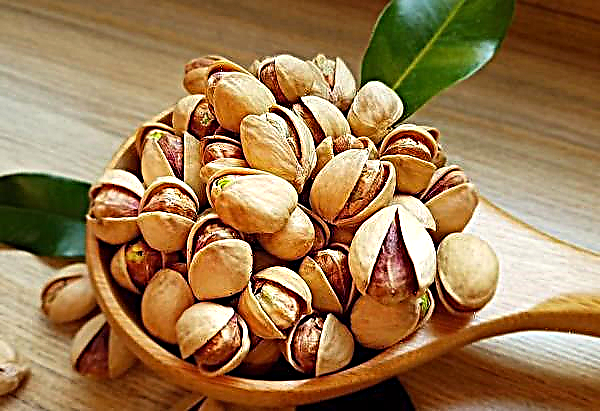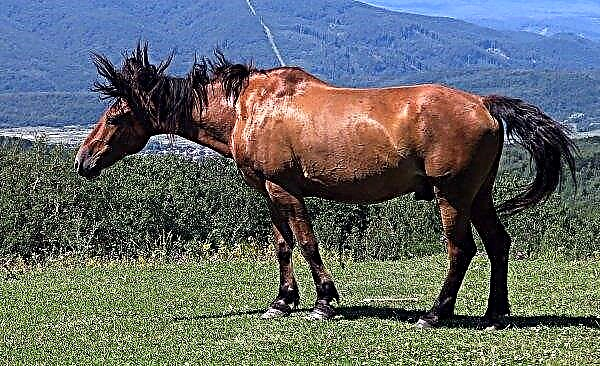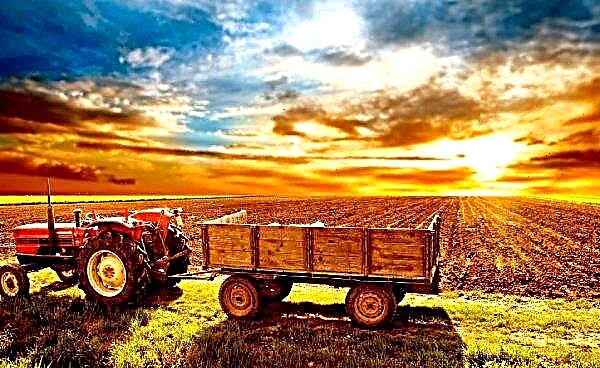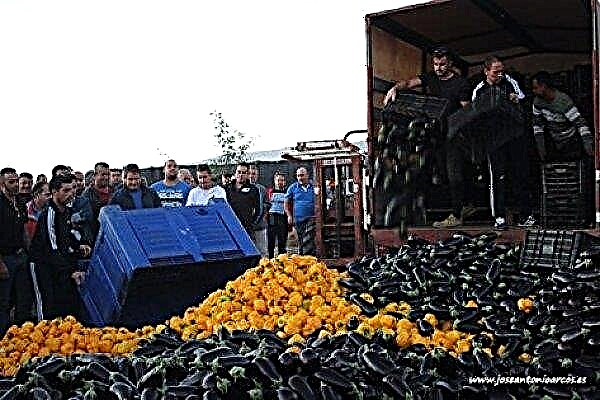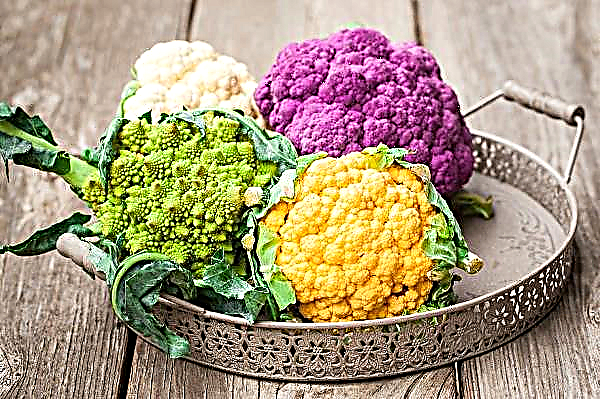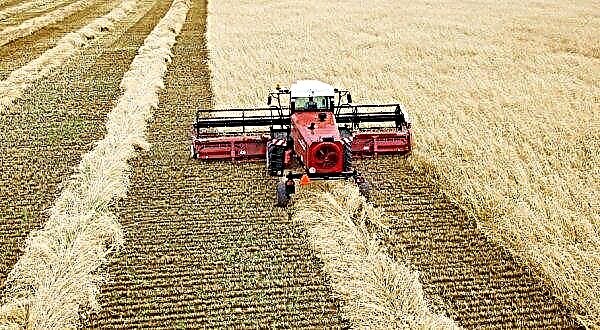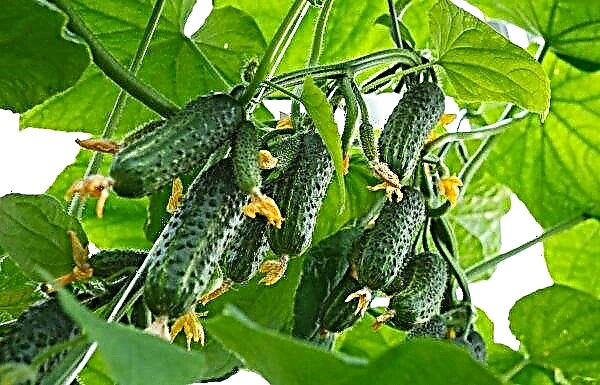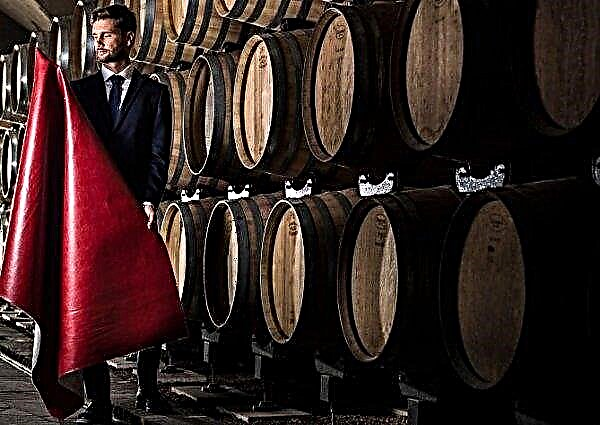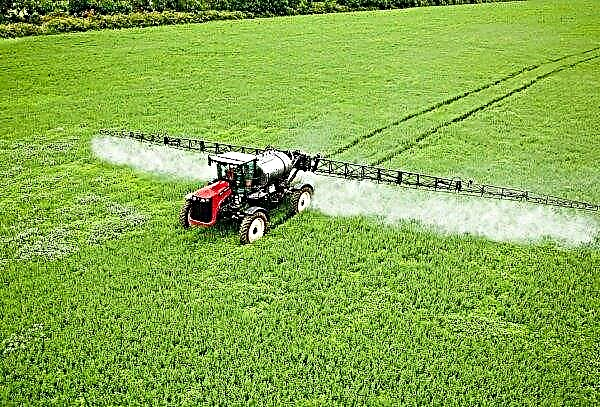If, when growing potatoes, gardeners have the task of obtaining a high yield of fruits with minimal financial, temporary and physical investments, then the Slavyanka variety will be an ideal option for planting. For the unpretentiousness in the care and simplicity of agricultural technology, this type was liked by most farmers. What are the advantages of the variety and how to grow it properly to get large yields, let's figure it out.
Description and characteristics of the variety
Slavyanka is a potato variety with an average ripening period, bred by employees of the Ukrainian Academy of Agrarian Sciences on the basis of virus-free seed material. Vegetable was introduced to the State Register relatively recently, in 2009. Today it is the most sought-after variety for cultivation in Ukraine. Ideal for cultivation in central regions with moderate climate conditions.
Video: Potato varieties Slav
Appearance
Slavyanka is a mid-season variety, the first fruits of which can be harvested 110–140 days after planting. The potato bush is rather tall, sprawling, the stem is of medium thickness with open, dissected with a small surface fringe leaves of a dark green color. During flowering, small flowers of violet-blue color form on the bush.
The fruits of the plant are presented in the form of large, oblong-oval tubers with a smooth, slightly reddish peel. Root crops are characterized by the correct form, excellent presentation. The weight of each varies between 90–250 g. The cream-colored flesh with a small pink on the cut, not watery, does not fall apart during heat treatment.
Did you know? Potato Slavyanka has a unique ability - it does not accumulate nitrates in tubers, and also does not degenerate during prolonged cultivation.
Taste qualities
Slavyanka can please not only the large size of the fruit, but also their excellent taste. The tubers have a rich, good taste and are characterized by a reduced amount of starch 11–13.4%, due to which they are excellent for frying, stuffing, making chips. The pulp of potato is rich in active biological substances, it is characterized by a high content of trace elements, in particular potassium, as well as amino acids necessary for the normal functioning of the human body.
Productivity
Variety Slavyanka is characterized as high-yielding. For one season from one hectare of land can be collected 180-400 centners. Moreover, under one bush, 12–15 selected root crops are formed. The marketability of the vegetable is 88–99%.
Important! Weather conditions have virtually no effect on plant yields. To a greater extent, this indicator will be determined by the quality of care and compliance with the basic rules of agricultural technology.
Advantages and disadvantages
Slavyanka is a potato that is grown almost everywhere on the territory of our state.
- And this is not surprising, because it has several advantages:
- high yields;
- excellent taste and aesthetic qualities of the fruit;
- resistance to various climatic conditions;
- undemanding care;
- resistance to many ailments characteristic of solanaceous.
- Among the disadvantages of the variety, experienced farmers note:
- low resistance to mechanical damage;
- exactingness to frequency and quantity of top dressings.
Planting and growing varieties
Planting and growing potatoes of the Slavyanka variety is not particularly difficult for experienced farmers, and will also be a feasible event for beginner gardeners.
Optimal landing time
Potatoes are planted in well-heated soil, starting in mid-April, when the risk of frost return is minimal. The optimum temperature indices of soil are considered to be +10 ... + 12 ° С. However, the timing of planting potatoes will depend in each hotel case on the region of cultivation and climatic environmental conditions.
Important! If there is a possibility of return frosts, then it is recommended to cover the potato bed with plastic wrap.
Preparing material for planting
Before planting potatoes in open ground, it must be properly prepared. Tubers of medium size, regular shape, with a large number of full eyes, without signs of decay, damage or disease are perfect as seed. Root crops are recommended to be disinfected: soak for 30 minutes in a weak solution of potassium permanganate, dry thoroughly.
Land preparation
Before carrying out planting, you should carefully prepare the soil: dig and fertilize. As the latter, it is better to use humus, wood ash and nitrophosphate, which are applied directly to each well. For the prevention of wireworms, gardeners advise to place onion husks in each recess, which is designed to scare off parasites.
Landing technology
In order to get a plentiful potato crop, you should adhere to special technology. Wells should be located at a distance of not less than 35 cm from each other, while their depth should be 8-12 cm, depending on the size of the tubers. The interval between the rows should be at least 0.7 m.
On small beds, experts advise practicing planting by the trench method: they dig a trench 0.25 m deep and 0.35 cm wide, place the remains of plants and compost at the bottom, lay root crops on top. Planting is covered with a small layer of soil 2-3 cm. Near this trench, another one should be dug at a distance of 0.7 m, the soil of which will serve as material for further hilling of the bushes.
Important! In order for the potato to have uniform germination, the bed after planting must be moistened with airborne droplets.
Post Planting Care
For successful growth of potatoes and obtaining a high yield, it is necessary to provide the plant with quality care after planting.
Cultural care activities consist of the following items:
- Watering. The variety needs regular, metered watering. He is not afraid of short-term droughts, however, with a constant shortage of water, the tubers of the vegetable will become smaller. Irrigation measures should be carried out without fail during the flowering of the plant, then - after 7-10 days, if necessary, taking into account the condition of the earth.
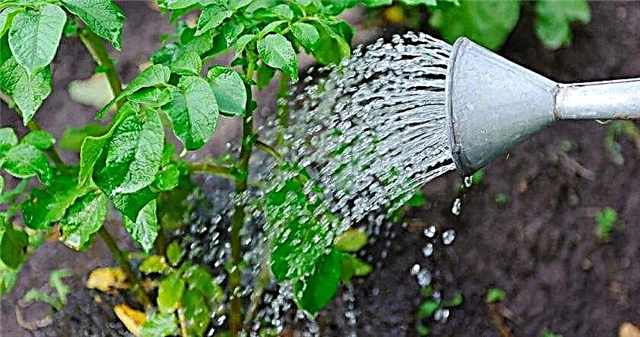
- Top dressing. Since potatoes of this variety belong to plants of the intensive type, for good growth and yield, it requires several top dressings over the season using mineral fertilizers enriched with potassium and organic products based on bird droppings or mullein. After planting the vegetable, it is recommended to water the plot with mullein diluted in water or droppings: 0.5 kg of fertilizer is diluted with 0.5 l of water, insisted for 4-5 days, then diluted with 1 bucket of water.
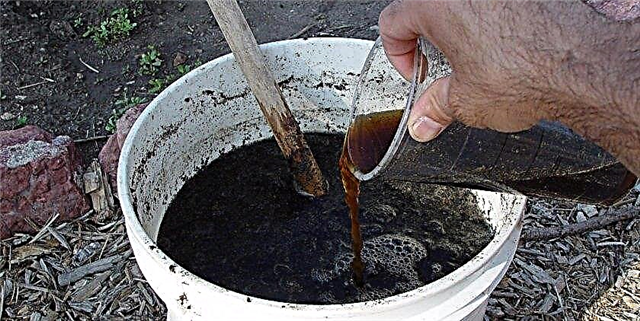
- Hilling ground. The technology of sheltering the base of the bush with a layer of soil, that is, hilling, has many advantages. It saturates the soil with oxygen and nutrients, activates the growth of side shoots and, as a result, the formation of new tubers, protects the bush from drought and possible frosts, and allows all root crops to stick together and not break up. In addition, carrying out hilling makes it possible to remove weeds and loosen the soil.
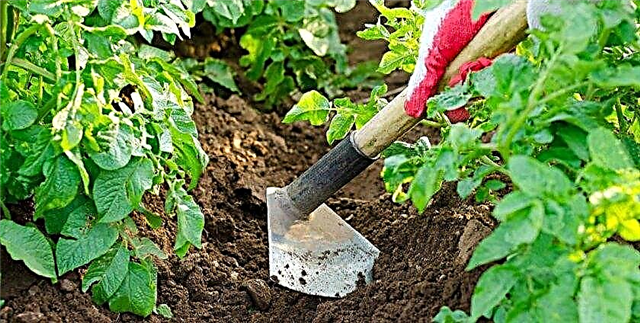
- Mulching. Potato beds are recommended by experts to cover with a small layer of mulch, which can be sawdust, hay, straw, mowed grass or black agrofiber. Mulching will allow you to save moisture in the soil, stop the growth of weeds, it will retain heat well, which will create a favorable area for the development of tubers.
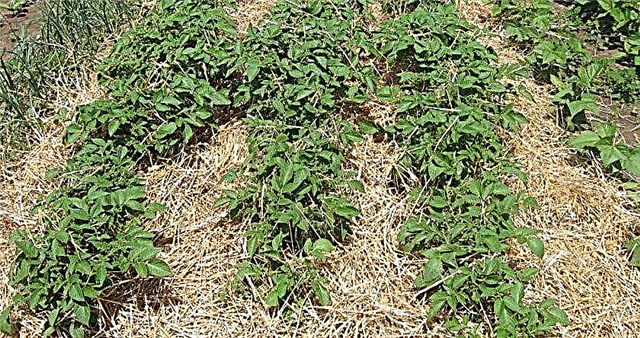
- Loosening. This procedure is recommended to be carried out immediately before moistening the bushes. It will provide an opportunity to enrich the soil with oxygen and valuable components that stimulate the development of fruits. Loosening is carried out to a depth of 6-7 cm, completely digging the top layer of soil.

Potato diseases and pests
The variety is extremely resistant to ailments and pests. It shows excellent immunity to the black leg, wrinkled mosaic, potato cancer, common scab.
If the rules of care are not followed, it may be exposed to:
- Late blight. This disease can spread both to tubers and to the aerial part of the bush. Root crops begin to rot, dark spots form on the leaves, which subsequently lead to rotting of all greenery.
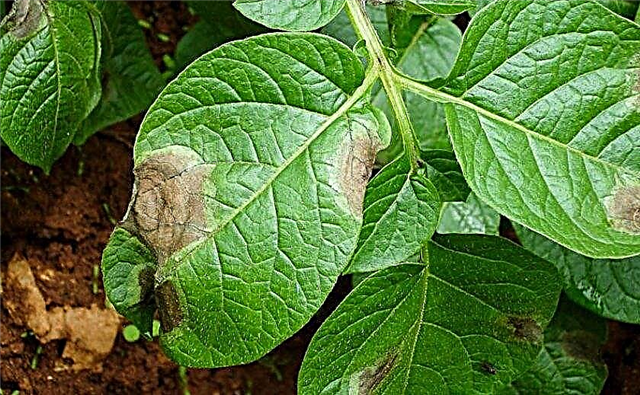
- Mold. The reasons for the appearance of mold on root crops are considered excessive soil moisture.

You can prevent the development of late blight by spraying the bushes with Fitosporin. In advanced cases, the plant is treated with modern insecticidal preparations.
As for pests, the Slavyanka is most often subjected to “attacks”:Did you know? A record potato crop was harvested in 1765 in the city of Novgorod. Then, from 45 kg of seed, 3 tons of 740 kg of fruits were obtained.
- Colorado potato beetle. He eats tubers and green potatoes, due to which the bush slows down in growth and development.
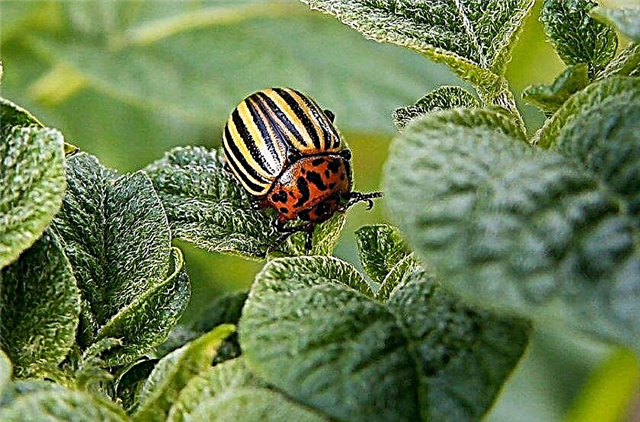
- Wireworm. This parasite, eating everything in its path, forms numerous through holes and small recesses in the roots in the root crops, which negatively affects the taste and aesthetic properties of the tubers.

Harvesting and storage
Potatoes are harvested 110–140 days after planting seed. You can determine the readiness of the vegetable for harvesting by the appearance of the bush: the stem falls, dries, the leaves fade. 10 days before digging, it is recommended to cut the tops of the plants and remove all weeds from the site. It is necessary to dig up tubers with great care, since they have a low resistance to mechanical damage.
The fruits are stored in a dry, cool place, with constant temperatures of +7 ... + 10 ° С. The ideal storage location for root crops is a dry cellar or basement. Potatoes are not allowed to be stored in high humidity or in direct sunlight.
Potato Slavyanka not without reason earned great popularity among gardeners. This variety is unpretentious in the care and cultivation, bears fruit well under adverse environmental conditions, has excellent resistance to many diseases. It will be an ideal option for beginners or lazy gardeners.Important! Slav is characterized by a high degree of preservation of the crop for a long time. The fruits retain their taste and aesthetic qualities for more than 7 months.











